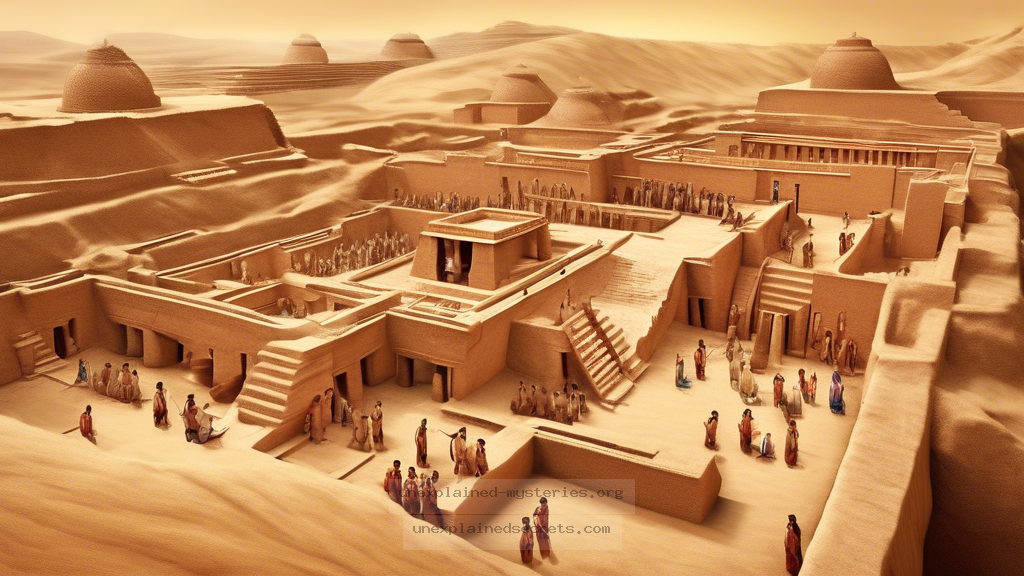What Happened to the Advanced Civilization of the Indus Valley?
What Happened to the Advanced Civilization of the Indus Valley?
The Indus Valley Civilization, one of the most advanced ancient cultures, flourished between 3300 and 1300 BCE in what is now Pakistan and northwest India. Yet, despite its remarkable achievements in urban planning, architecture, and social organization, this civilization mysteriously declined and eventually vanished. Understanding what happened to the Indus Valley Civilization matters not only for historical insight but also for comprehending the complexities of human societies. Let’s delve into the enigma of this ancient civilization, exploring the clues left behind and the theories surrounding its disappearance.
Historical Context: The Rise of the Indus Valley Civilization
The Indus Valley Civilization, also referred to as the Harappan Civilization after one of its major cities, was distinguished by its sophisticated urban centers including Harappa and Mohenjo-Daro. These cities featured advanced drainage systems, standardized weights, and a form of script that remains undeciphered. At its peak, the civilization encompassed a vast area, with evidence of trade links extending to Mesopotamia and Egypt.
Archaeological excavations have revealed that the society was remarkably organized, with evidence of planned cities laid out in grid patterns, suggesting a high degree of social coordination. Agriculture thrived in the fertile plains of the Indus River, and the people cultivated wheat, barley, and cotton, making them among the first to produce cotton textiles.
The Decline: A Multi-Faceted Mystery
Despite its advancements, the Indus Valley Civilization began to decline around 1900 BCE. The reasons for this decline are complex and multifaceted, leading to various theories among historians and archaeologists. Some of the most prominent explanations include environmental changes, economic factors, and social upheaval.
Environmental Factors: Climate Change and Natural Disasters
One of the leading theories suggests that climate change played a significant role in the decline of the Indus Valley Civilization. Evidence indicates that the region experienced a shift from a humid climate to a more arid one, which could have severely impacted agriculture. As rivers dried up and monsoon patterns changed, the agricultural base of the civilization would have been compromised, leading to food shortages and economic decline.
Additionally, there are indications of flooding in some areas, possibly due to the shifting of the Indus River. Natural disasters could have forced populations to abandon their cities in search of more sustainable living conditions.
Economic Decline: Trade Networks and Resource Management
Another potential factor in the civilization’s decline is the disruption of trade networks. The Indus Valley Civilization was heavily reliant on trade, both internally and with neighboring cultures. As resources became scarce due to environmental changes, the economy may have faltered, leading to social unrest and decline.
Moreover, the decline in trade could have resulted in a lack of access to essential goods, further exacerbating the situation. The evidence of decreasing craftsmanship in artifacts suggests a reduction in economic stability and social cohesion.
Social Upheaval: Theories of Internal Conflict
Some scholars argue that social upheaval, possibly in the form of internal conflict, contributed to the decline of the Indus Valley Civilization. As resources dwindled, tensions within communities may have escalated, leading to social fragmentation. The lack of centralized governance, which was evident in the decentralized nature of the cities, might have made it difficult to manage conflicts effectively.
Comparison with Other Civilizations: Lessons from the Past
When examining the collapse of the Indus Valley Civilization, it can be insightful to compare it to other ancient civilizations that faced similar fates, such as the Maya and the Akkadian Empire. All these societies encountered environmental changes, resource depletion, and internal strife, leading to their eventual decline. The following table summarizes these comparisons:
| Civilization | Time Period | Key Factors in Decline |
|---|---|---|
| Indus Valley | 3300 – 1300 BCE | Climate change, economic decline, social conflict |
| Maya | 250 – 900 CE | Drought, warfare, societal collapse |
| Akkadian Empire | 2334 – 2154 BCE | Climate change, invasions, internal strife |
Common Misconceptions: Myths about the Indus Valley Civilization
Despite the extensive research conducted on the Indus Valley Civilization, several misconceptions persist. One common myth is that the civilization was entirely peaceful and devoid of warfare. While archaeological evidence does suggest a notable lack of weapons, this does not necessarily mean that conflict did not occur; rather, it may indicate different forms of social organization or conflict resolution.
Another misconception is the notion that the civilization’s decline was abrupt. In reality, the decline likely occurred over several centuries, with gradual changes in social, economic, and environmental factors contributing to the eventual dispersal of the population.
Practical Implications: What Can We Learn Today?
The study of the Indus Valley Civilization and its decline offers invaluable lessons for contemporary society. It highlights the importance of sustainable resource management, especially in the face of climate change. The potential for societal collapse due to environmental factors serves as a cautionary tale for modern civilizations as they navigate the challenges posed by global warming and resource depletion.
Future Developments: Ongoing Research and Discoveries
Research into the Indus Valley Civilization is ongoing, with new archaeological discoveries continually shedding light on this enigmatic culture. Recent advances in technology, such as satellite imaging and aerial photography, have allowed archaeologists to uncover previously hidden sites and gain a better understanding of the civilization’s extent and urban planning.
Moreover, interdisciplinary studies incorporating climate science, anthropology, and archaeology are providing more comprehensive insights into the factors contributing to the civilization’s decline. These developments promise to enhance our understanding and perhaps even lead to new theories about this remarkable ancient culture.
Conclusion: The Enigma of the Indus Valley Civilization
The disappearance of the Indus Valley Civilization remains one of history’s most captivating mysteries. Through examining environmental changes, economic factors, and social upheaval, we gain a nuanced understanding of how complex societies can rise and fall. As we continue to investigate this ancient civilization, we not only uncover the secrets of the past but also glean insights that resonate with our present-day challenges. The Indus Valley Civilization’s legacy serves as a reminder of the delicate balance between human innovation and the environment, urging us to learn from history as we forge our future. ✅
Other Articles
Recent Posts
- What Happened to Flight MH370? The Conspiracy Theories That Still Haunt Us
- What Secrets Lurk Within the Walls of the Infamous Trans-Allegheny Lunatic Asylum?
- What Evidence Supports the Existence of Bigfoot in the Pacific Northwest?
- What Happened to the Indus Valley Civilization? Unraveling the Mysteries of Ancient Urban Life
- Can Telepathy Be Scientifically Proven Through Laboratory Evidence?







